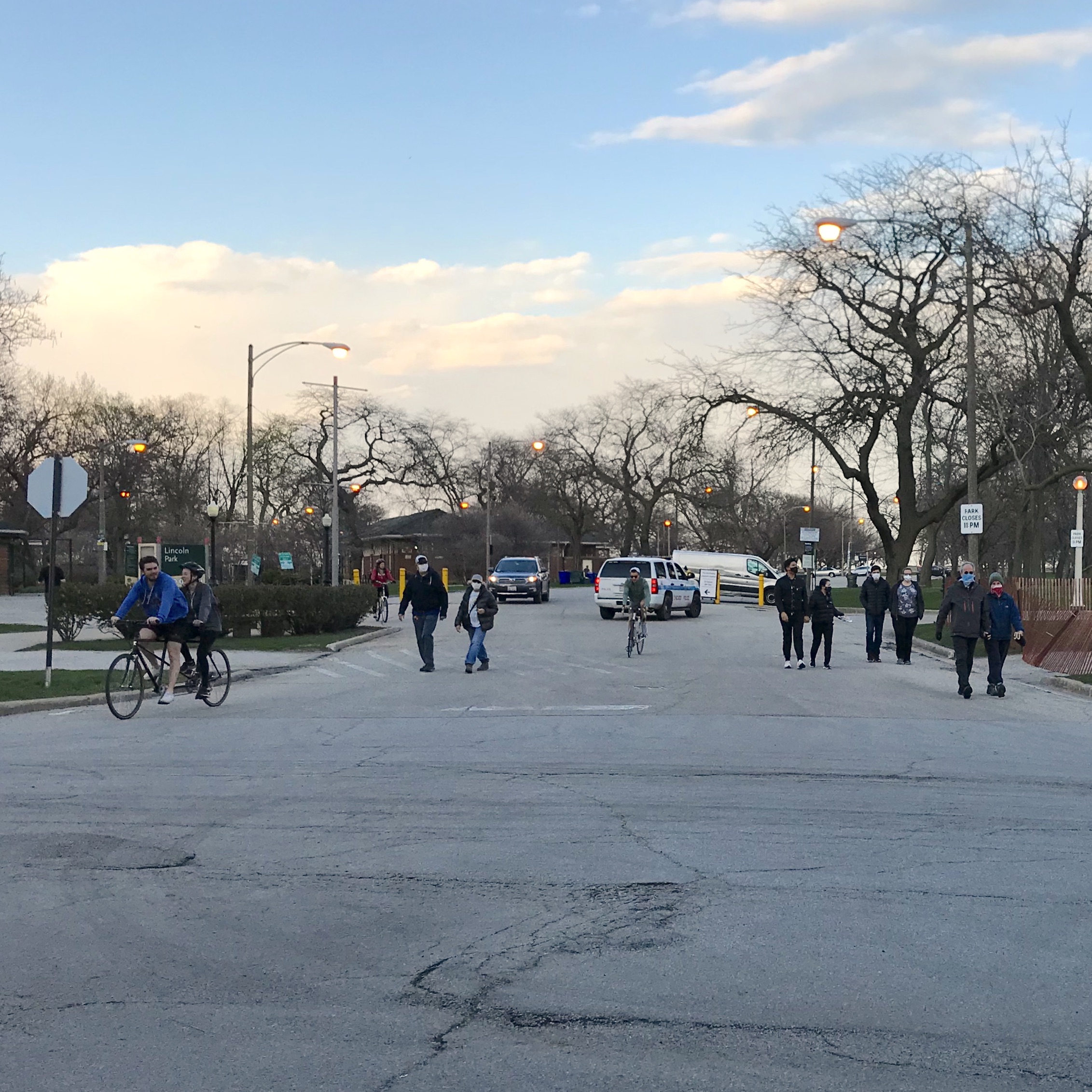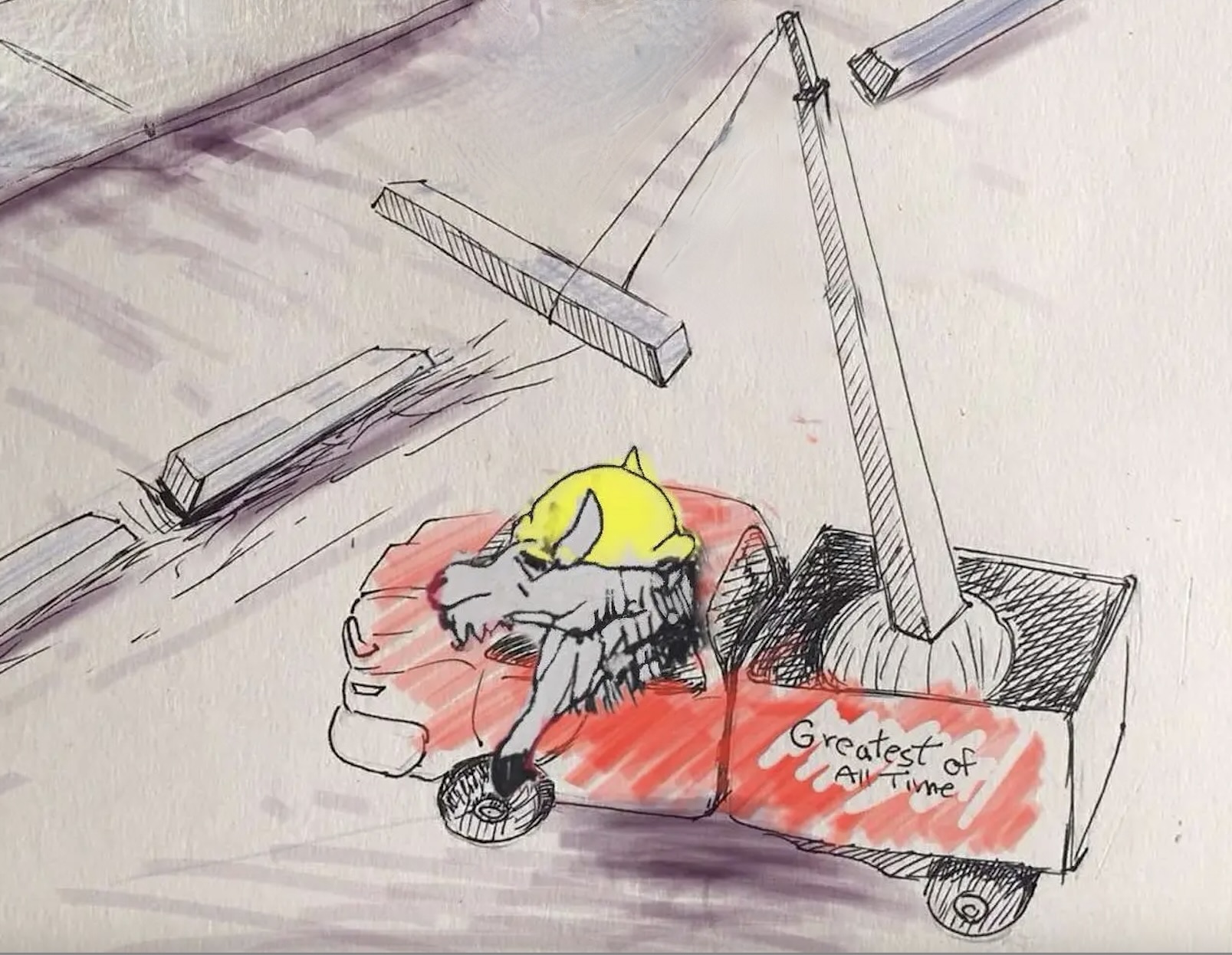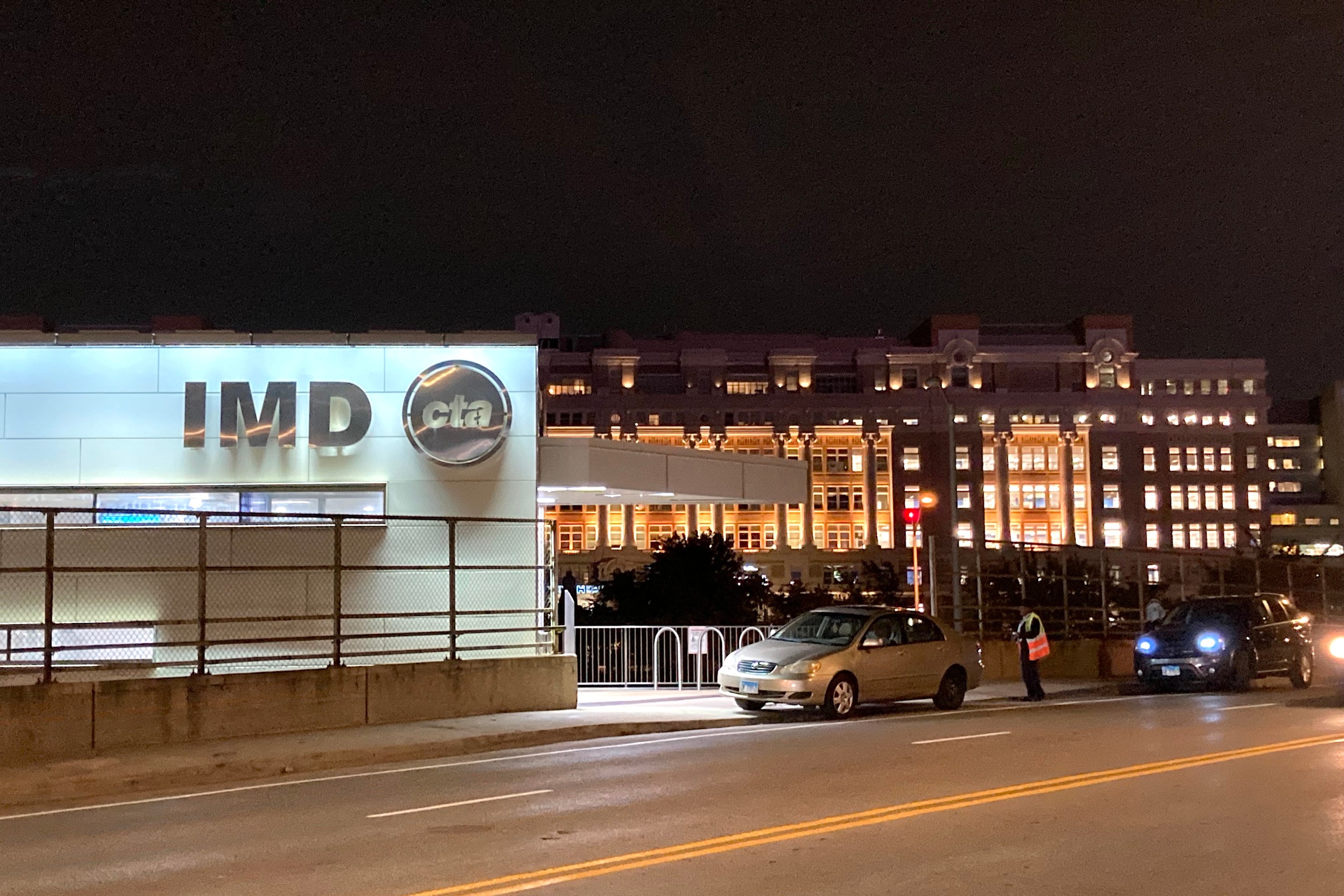There's a tremendous opportunity to create a new transportation landscape in a post COVID-19 Chicago. Unfortunately, many residents have seen their incomes reduced or eliminated due to business restrictions, closures, and layoffs during Stay at Home. They will likely be interested in economical ways to get around. And as workplaces open back up once the order is lifted, many people will still be wary of using transit due to concerns about viral exposure.
We can respond proactively to these trends with initiatives that make sustainable transportation safer and more appealing. Or we can do nothing, which will almost certainly result in a post-pandemic increase in driving, congestion, pollution, and crashes.
Since traffic and car parking demand is so light right now, the city of Chicago could convert excess travel lanes or parking lanes to temporary protected bike lanes that can meet the growing demand for cycling, something that cities from New York to Berlin are doing right now. (Yes, Chicago's awful parking meter contract requires us to compensate the concessionaire for spaces lost to bike lanes, but this could be addressed with strategies like stripping parking from one side of the street and striping diagonal parking on the other. If the temporary bike lanes prove to be a popular alternative to driving and transit, they could be made permanent.
Of course, some folks won't be willing or able to ride a bike for transportation, and cycling may be impractical for long-distance trips. So to prevent an increase in driving after the outbreak, we also need to make transit as safe and appealing as possible. The CTA will need to continue to implement strategies to reduce crowding, such as running more buses on busy lines like 79th Street that experienced dangerous passenger loads earlier in the quarantine. Currently the CTA is allowing drivers to run express if they reach 15 passengers on a regular bus or 22 riders on an accordion bus. Bus-only lanes are also needed to reduce the amount of time riders spend traveling, and make it easier to run more vehicles without bus bunching.
When I attended the Rails to Trails Conservancy webinar, “Closing Streets to Create Space for Walking and Biking During COVID-19”, I was struck by Laura Leticia Bahamón Peña, bicycle manager with the Ministry of Transportation in Bogotá, mentioning that Bogotá modeled its bike lanes on the idea of bringing dignity to biking. I thought of my own experiences biking in Chicago and dignified is not a word I'd use. As I've mentioned before, I’ve experienced lots of harassment from drivers and some of the experiences left me feeling shaken. Chicago's paint-only bike lanes and sharrows do not offer protection from harassment, injury, or death. By upgrading the experience of biking we have an opportunity to increase mode share, something that is not only important during the post-COVID period, but as a general strategy to fight climate change.
As I researched Bogotá’s approach to bike lanes I came across a People for Bikes report, “Building Equity: Race, Ethnicity, Class, and Protected Bike Lanes: An Idea for Fairer Cities.” The need to equitably allocate public space was a key influence on Bogotá leaders' decisions to redesign city streets to make them more bike- and bus-friendly, and therefore more democratic.
This time when car traffic has plummeted but speeding and crash severity is on the rise, while pedestrian activity and cycling is surging, is a unique opportunity to reimagine our streets. We commit an injustice by continuing to allocate so much public space the least efficient and most destructive mode of travel, all the while forcing people on foot and bike to fight for the scraps. We are better than that.
Of course, making these changes will require some imagination and courage from our leaders, who will need to residents why it's important to make our city less car-centric. So far Mayor Lori Lightfoot has shown zero interest in making more space for biking and walk during COVID-19, and has instead closed major trails and parks. The Active Transportation Alliance has also abandoned its mission to advocate for walking and biking during the crisis, instead arguing that "we must do that a lot less, if at all" at this time, contrary to the advice of infectious disease experts.
Lawmakers in Springfield would do well to shift more transportation funds to transit and biking to reflect the increasing importance of these modes. It also would also be helpful to change the state law requiring transit agencies to pay for half of their operations costs through fares. That's challenging even during normal times, but totally impossible during the pandemic, when farebox revenue has tanked, but it's still crucial to keep transit running for essential workers.
What are some ways you'd like the city of Chicago and state of Illinois to remake our transportation system in response to COVID-19?



